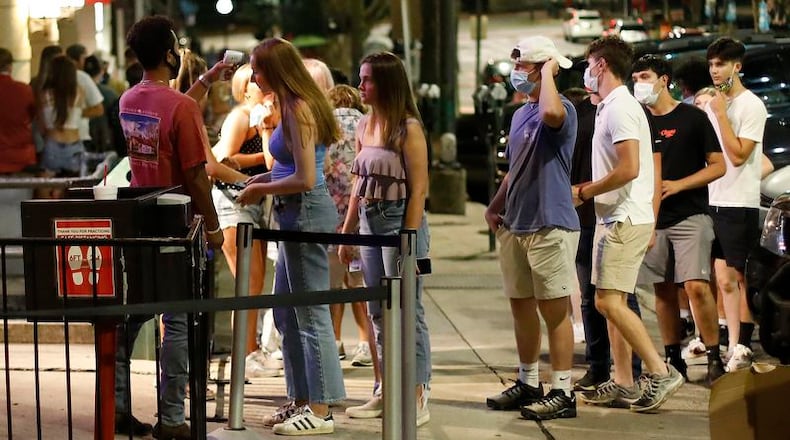Residents of university towns including Athens have been wary of claims that campuses can bring thousands of students back for in-person classes without escalating the spread of COVID-19 in the surrounding area. Turns out that skepticism may be justified.
A new Centers for Disease Control and Prevention analysis released today found counties with large universities experienced a 56% increase in COVID-19 when the campuses opened with in-person instruction. Conversely, counties with major universities that opened with remote learning showed a 17.9% decrease in incidences of COVID-19.
We already knew that COVID-19 increased among young adults in August 2020, and outbreaks were reported on many campuses. This new research delved into the extent to which the type of instruction – in-person vs. remote – influenced COVID rates in the counties where the campuses were located.
The impact was considerable. A comparison of the 21-day periods before and after campuses started classes revealed that face-to-face courses were linked to higher COVID rates and the occurrence of hot spots in the communities.
Andrew J. Leidner, an economist for the CDC COVID-19 Response Team, and his team looked at universities with at least 20,000 students in 101 U.S. counties; the schools resumed classes from July 27 to Aug. 28. County-level mean estimates of COVID-19 incidence, testing rates, percentage test positivity, and hotspot status were compared for university counties with remote-instruction, in-person–instruction, and non-university counties during the 21 days before and after the start of classes.
The study acknowledged some limits, including no assessment of longer-term implications for county incidence beyond 21 days. Still, the report says the findings call for more effective mitigation activities at colleges and universities with in-person instruction to minimize on-campus COVID-19 transmission and reduce county-level incidence.
The study concludes:
Efforts to prevent and mitigate COVID-19 transmission are critical for U.S. colleges and universities. Congregate living settings at colleges and universities were linked to transmissions. Testing students for COVID-19 when they return to campus and throughout the semester might be an effective strategy to rapidly identify and isolate new cases to interrupt and reduce further transmissions. Colleges and universities should work to achieve greater adherence to the recommended use of masks, hand hygiene, social distancing, and COVID-19 surveillance among students, including those who are exposed, symptomatic, and asymptomatic.
Increasing testing capacity and engaging in other COVID-19 mitigation strategies might be especially important for colleges and universities in areas where transmission from students into the broader community could exacerbate existing disparities, including access to and utilization of health care, as well as the disproportionate morbidity and mortality of COVID-19 among populations with prevalent underlying conditions associated with more severe outcomes following infection. Some university counties might have one or more concerning factors, such as higher levels of older adult populations, high rates of obesity and cardiovascular disease, or strained health care resources.
These counties might need to consider the implications of in-person instruction on spread of COVID-19 among a student population that might have interactions with persons at higher risk in the community. College and university administrators should work with local decision-makers and public health officials to strengthen community mitigation, in addition to continuing efforts to slow the spread of COVID-19 on college and university campuses.
About the Author
The Latest
Featured



